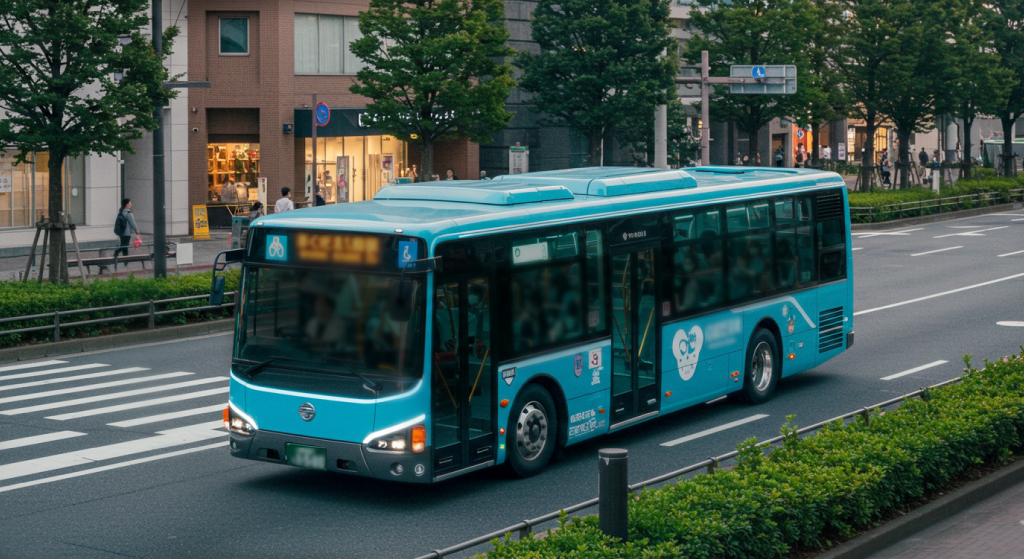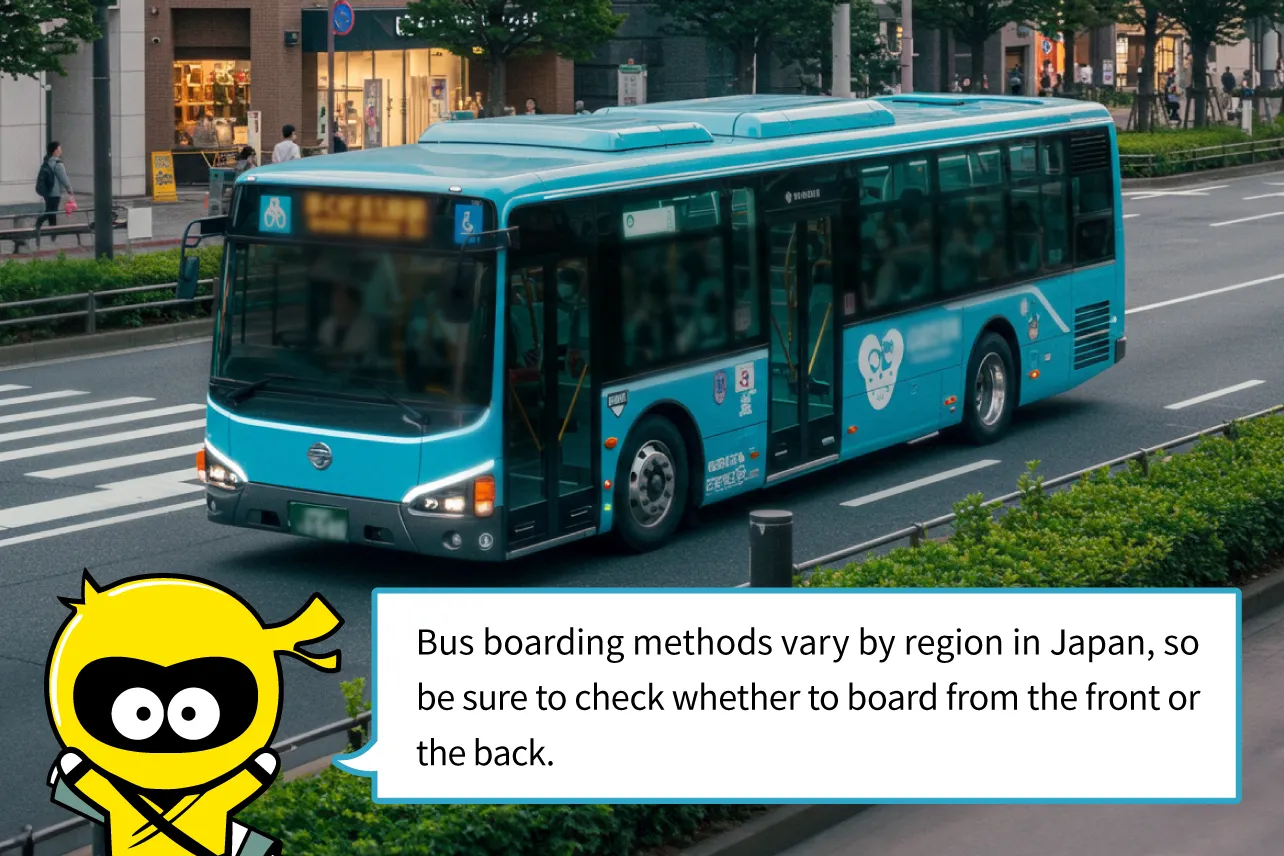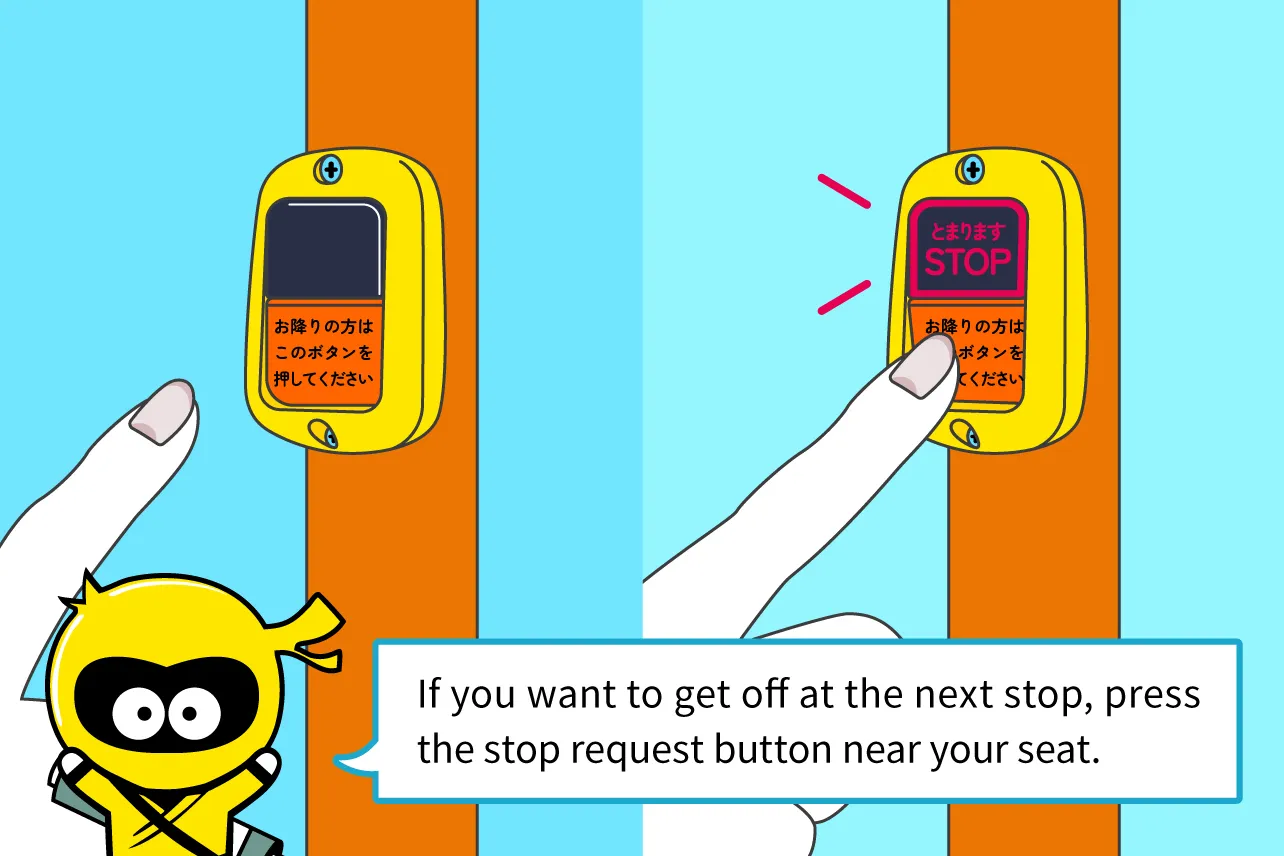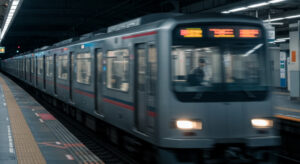

Line Up Quietly at the Bus Stop
In Japan, it is customary to form an orderly line and wait quietly at bus stops. Even during busy hours, pushing or skipping the line is considered rude. During rush hours, many people use buses, so it’s important to be mindful of others. Most bus stops have markings indicating where to line up. Avoid loud conversations and keep your phone volume low while waiting. This quiet and respectful behavior is highly appreciated in Japanese culture.
Boarding from the Front or Rear? Know the Regional Differences


Boarding styles vary depending on the region in Japan. In major cities like Tokyo and Osaka, passengers usually board from the front and exit from the rear. In contrast, many regional buses require passengers to board from the rear and exit from the front. Instructions are usually displayed on the bus itself. If you’re unsure, don’t panic—just ask the driver politely, and they’ll be happy to assist.
Cash or IC Card? Choose the Right Payment Method
In most urban areas, IC cards like Suica and PASMO are widely accepted and convenient for bus fare payments. Simply tap your card when boarding or exiting, depending on the bus system. However, some rural buses still accept only cash. If paying in cash, prepare small coins and pay into the fare box when getting off. Some buses have change machines, but it’s best to be prepared in advance for a smooth ride.
Be Respectful in Priority Seats
Priority seats are designated for the elderly, pregnant women, and passengers with disabilities. Even if these seats are empty, you should give them up when someone in need boards. In some buses, passengers are asked to turn off their mobile phones near priority seats. Avoid loud music and conversations, and help maintain a quiet, respectful environment for everyone.
Keep Phone Calls and Conversations to a Minimum
Public quietness is highly valued in Japan. Talking on the phone inside buses is usually prohibited, and many bus operators clearly request this. If you need to speak with a friend, do so quietly and briefly. Especially during peak hours or near priority seats, it’s important to avoid disturbing others. Such courteous behavior earns respect from locals and enhances your travel experience.
Store Large Luggage Properly
If you’re traveling with large suitcases or backpacks, make sure not to block the aisles or seats. Place your luggage at your feet or in the designated storage area, if available. Holding your bag in front of you is another way to avoid inconveniencing others. Responsible luggage handling helps ensure a pleasant ride for all passengers.
Press the Stop Button at the Right Time


To get off the bus, press the stop button before your intended stop. The best time is right after the announcement for the next stop. Pressing too early may confuse the driver, while pressing too late may result in the bus not stopping. Once you see the “Next stop” indicator light up, prepare to exit calmly and safely.
Say “Thank You” When Getting Off
It’s common in Japan to thank the bus driver when exiting the bus, often with a polite nod or by saying “Arigatou gozaimashita.” While not required, this small gesture of gratitude is appreciated and leaves a positive impression. In rural areas especially, this custom is deeply rooted and welcomed even from tourists. A simple thank-you can go a long way in making your trip more memorable.
Understanding Schedules and Delays
Japanese buses are known for punctuality, but delays may still occur due to traffic or weather. In rural areas, buses may run infrequently, so check the schedule in advance and plan accordingly. Use Google Maps or bus company apps to check real-time locations and updates. Having some flexibility in your schedule will help you avoid stress.
You might be interested in this
Special Rules on Sightseeing Buses
In tourist areas, special sightseeing buses or loop buses may be available. These often offer convenient one-day passes or flat fares. They may have unique rules or announcements, so be sure to read any signs or listen carefully before boarding. Tourist information centers and train stations usually have helpful brochures and maps to guide you.




